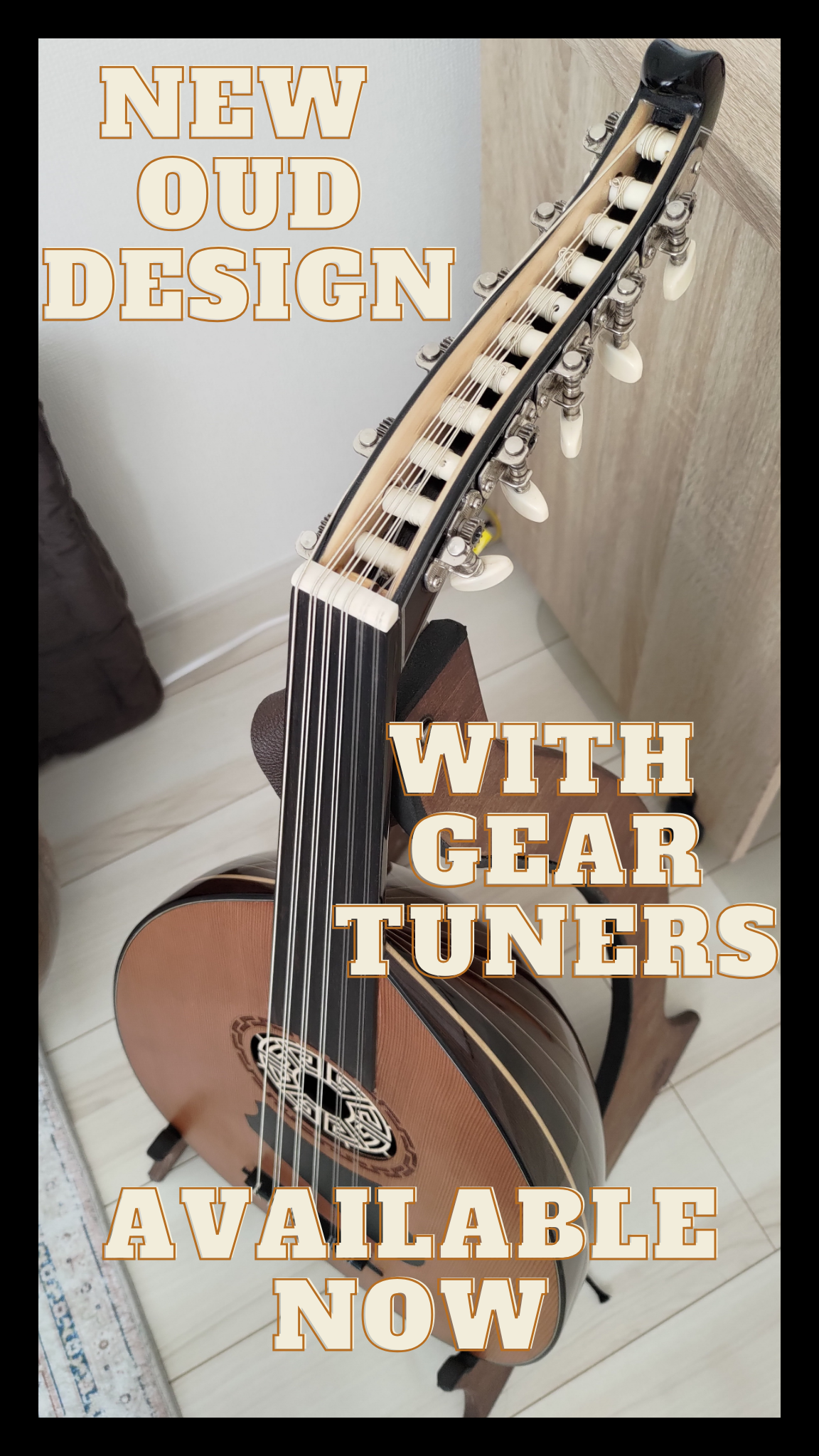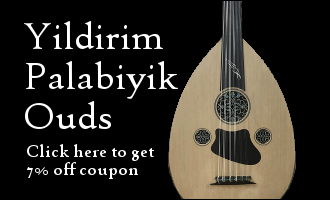These days you hear the term “minimalist” in describing one’s interior design, fashion or lifestyle, but what about Oud playing?
Some Oud players like to keep their pieces simple highlighting a few robust techniques, and others prefer to sneak in technical arrangements in every phrase that they play.
So today, I want to compare these 2 Oud pieces and see what you think. Have a listen to both, and try to pick up stylistic differences.
Samai Husaini played by Hamza El Din
Samai Muhayyar played by Nizar Rohana
How were they? They play similar phrases, but their styles are distinctly different.
To highlight the differences, Hamza al Din’s playing features sparser playing. He gives space to the notes, and uses rhythmical fills in a very targeted way. Overall, his playing sounds relaxed and down-to-earth.
He uses one or two dynamic fills that are characteristically HIS. You could spot his playing, by the way he executes it.
On the other hand, Nizar Rohana uses slides, adds extra notes to embellish melody, adds doubling up, bass note jumping, rhythmical fills in between the melody, and syncopation. This one gives a more dramatic, modern, and intricate impression than Hamza al Din’s.
So which one did YOU like and why? Comment below 🙂
It’s really up to your personal preference. Both pieces are beautiful and perfect in their own way, and use techniques in different ways.
But just because one is simpler than the other, it doesn’t mean the simple one sounds boring.
Or just because one is full of techniques, it’s not necessarily the most professional playing.
What makes both these pieces beautiful is not just the players’ ability to play those techniques but their tasteful choices of them. That’s really the difference between an amateur player and a seasoned Oudist.
So no matter which style you prefer, arming yourself with all the techniques and being able to make choices of what technique to use here or there is what makes the music your own.
So how do you learn to play Oud like that?
Listening to quality pieces as above and analyzing what they do is one way to do it. After all, that’s how musicians have always learned… by stealing techniques from one another.
But it takes a long time. You’d have to listen to the same piece over and over again to decipher what notes they are playing and what really they’re doing. Then you can finally try to re-create it. And because this process is time consuming and frustrating, many Oud players fail to follow through.
So I’ve done the boring work for you 🙂
In my Masterclass premium course, you can learn various techniques that allow you to step up the game, and how to arrange pieces. You can start by simply copying what I do and play a beautiful arrangement of the famous Samai Bayati Al Aryan. By the end of the course, you’ll be able to add techniques and arrange any piece and make it into your own, so you feel GREAT about your own playing.
I’m offering a special promotion on this course next week, so if you want to finally play really great arrangements, be sure to check it out.
Click here to check out the Masterclass premium course
In the course page, I also share the 5 Golden Techniques, which create the majority of the outstanding character of Oud playing. Take a look!







In the late 1980s I was impelled to learn to play oud properly (I’d had some basic lessons at the Rachidia Institute in Tunis when I was teaching there in the early 80s) when I heard recordings of Munir Bashir. I had just stopped smoking so whenever I wanted a cigarette I would pick up the oud and try to play like Munir. His long meditative pauses helped me overcome the nicotine cravings and playing oud was a life saver. (I had the privilege of seeing him play in London once – to an audience of 8 including me and my wife.) Munir’s structural use of silence –the space between the notes – so captivated me that I incorporated silence into my incidental music composition for productions at the Royal Shakespeare Company (2001-2013). Later, I discovered Anouar Brahem cds and in certain tracks found a similar sparse, uncluttered contemplative mood which I enjoyed and still enjoy today. I also discovered Simon Shaheen around the same time and while recognising his brilliant musicianship I wasn’t moved by his playing at all – very fast, very fluent – but it left me indifferent. Not to ‘dis’ Mr Shaheen but one’s likes in the end are very personal. And my liking is for a slow, almost ‘spiritual’ approach. So as an example here’s one of my current faves: a piece by Franco-Tunisian composer Amine Bouhafa called ‘The Fisherman’ from 2014 film ‘Timbuktu’. Played by oudist Bachir Gharbi with Amine himself on clarinet. Enjoy. https://www.youtube.com/watch?v=Od-TZO_8hxc
Hey Navid
I’m still here if a little silent. Both tunes to me were very good, i know nizar’s work but have not heard hamza’s stuff until now. I think i may have told you before that i am a fretless guitarist not an oud player but i do listen to a lot of oudists. The best way i can describe my feelings with regard to fast and more retrained playing is with the Australian oud maestro Joseph tawardros. I loved his early stuff with it’s fast vurtuosic playing but my personal interests have shifted to a more subdued state where his new album “betrayal of a sacred sunflower” has become my favorite. This is how i feel toward playing in general with my focus now on more restrained and focused playing but i do still love a bit of shredding here and there. This probably makes no sense at all but i think there is merit in all playing and only your personal taste dictates what you find compelling.
All the best
Pete.